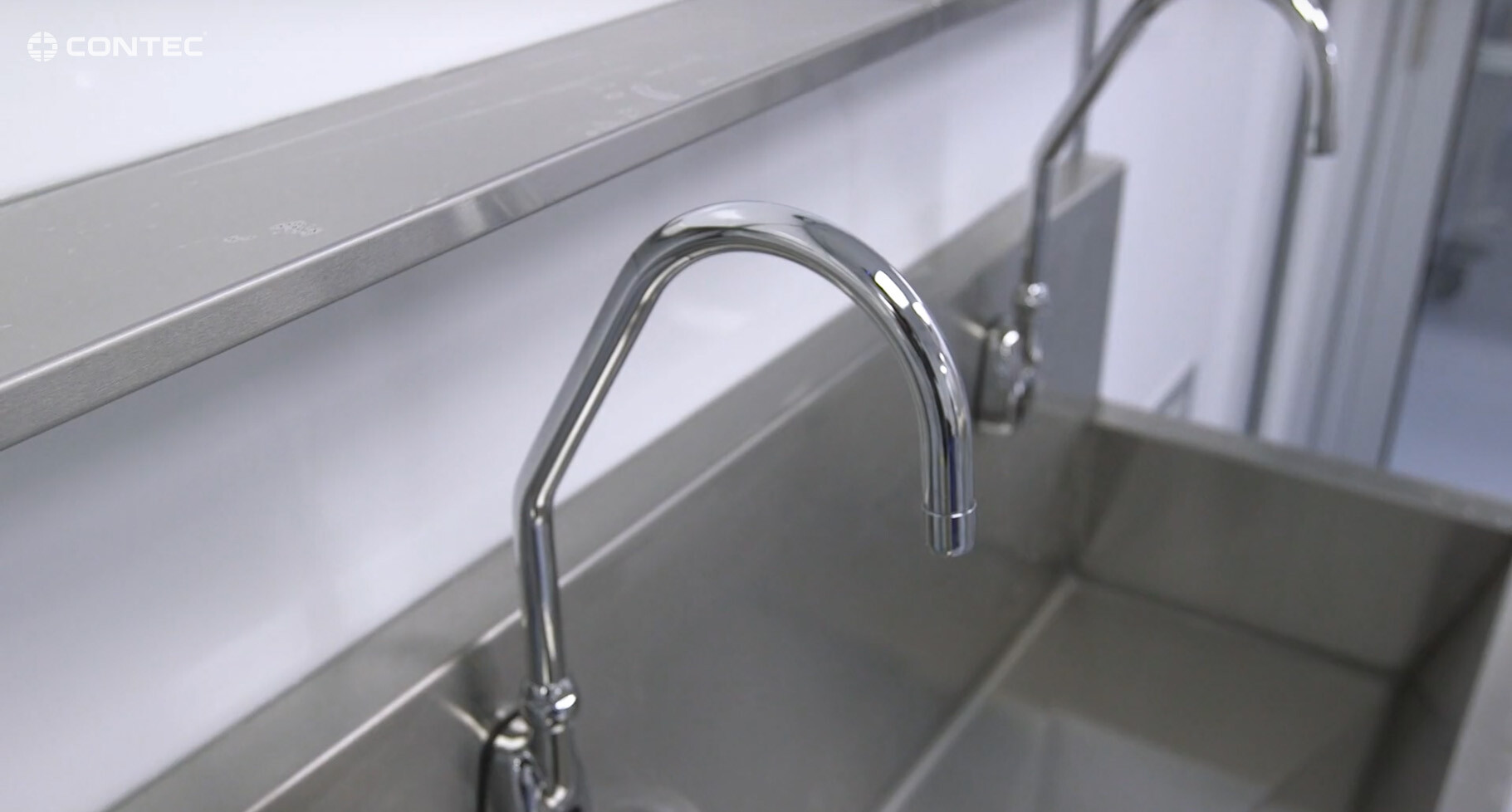Thinking About the Sink Without it Becoming a Pain in the Drain
Maintaining the hygiene of sinks and drains is challenging for many industries, including compounding pharmacies, acute care facilities, and food processing plants. Obstacles include limited access to the drains, the age and materials used in sinks and plumbing, and the myriad of substances introduced into the system over its lifetime. However, sinks in cleanroom suites, especially those in facilities adhering to USP <797> guidelines, can be a source of microbial contamination and thus require thorough cleaning and disinfection.
Daily Cleaning and Disinfection
USP <797> guidelines mandate that sink surfaces be cleaned and disinfected daily, with a sporicidal disinfectant applied at least monthlyi. For regular cleaning of basin surfaces, ledges, faucets, and accessible drain areas, it is recommended to use EPA-registered disinfectants like PREempt® Plus or TB1-3300™, along with low-lint wipes like EcoCloth™. These disinfectants are also available as pre-saturated wipes for convenience.
Additionally, it is a best practice to clean these surfaces weekly with a more aggressive product to remove soap residues and mineral deposits caused by hard water. Contec® Healthcare’s Clean Scrub™ Sponge is an excellent tool for scrubbing these areas effectively.
Sporicidal Disinfection and Sink Drains
To meet the USP <797> requirement for sporicidal disinfection, applying PeridoxRTU® with a low-lint wipe, such as EcoCloth™, is recommended for sink surfaces. However, sink drains can harbor biofilm and microbial contamination that may spread beyond the drain through splashing.ii
Pouring disinfectant directly into the drain and allowing it to dwell is one approach to treat this biofilm. However, this method may not be efficient because the disinfectant can flow past critical areas too quickly. Innovative solutions, like using a drain stop valve or Foley catheteriii, can help ensure the disinfectant remains in contact with the target area for the required wet contact time.
Preventing Corrosion
When pouring disinfectant into drains, it’s essential to consider the risk of corrosion. Many substances (even biofilm itself) can corrode cast iron, copper, or brass piping over time. To prevent corrosion, rinse the drain thoroughly with running water after the disinfectant has achieved its required contact time. For instance, PeridoxRTU® needs a contact time of 3 minutes, followed by a 1-minute rinse.
Also consider replacing cast iron or chrome-plated brass pipes with PVC piping, which is more resistant to corrosion.
Expert Recommendations for Sink and Drain Maintenance
While USP <797> guidelines do not specifically address sink drains, focusing on the regular cleaning and disinfection of sink surfaces is crucial for daily and monthly compliance. For best practices on disinfection of sink drains:
- For PVC piping: Disinfect the sink drain once per month by pouring disinfectant and allowing it to dwell, followed by a thorough rinse.
- For cast iron or chrome-plated brass piping: It’s recommended to switch to PVC piping or reduce the frequency of disinfection to quarterly.
Installing a stop valve below the sink can help keep disinfectants in contact with critical areas between the sink basin and the P-trap, further enhancing the cleaning process.
For more information on Contec Healthcare's disinfecting solutions and expert advice on maintaining cleanrooms, contact your Contec Healthcare representative.
i Valentin, Anne-Sophie, et al. "A prospective multicentre surveillance study to investigate the risk associated with contaminated sinks in the intensive care unit." Clinical Microbiology and Infection 27.9 (2021): 1347-e9.
ii United States Pharmacopeia. <797> Pharmaceutical Compounding – Sterile Preparations. Official 01-May-2024.
iii Jones, Lucas D., et al. "Instillation of disinfectant behind a temporary obstruction created by an inflated urinary catheter balloon improves sink drain disinfection." American Journal of Infection Control 47.12 (2019): 1522-1524.



.png)